What the Difference Between Braces, Aligners, and Plates Is
Today’s dentistry can take on the most complicated issues of teeth growth. Thanks to various orthodontic devices, specialists have learned to correct a bite, fix teeth crowding and their curvature, and make a smile more beautiful.
5-Minute Crafts is telling you about the advantages and disadvantages of various orthodontic constructions.
❗ Make sure to consult with a doctor before deciding on such devices. It’s only an orthodontist who can choose the perfect treatment for your teeth.
Orthodontic plate
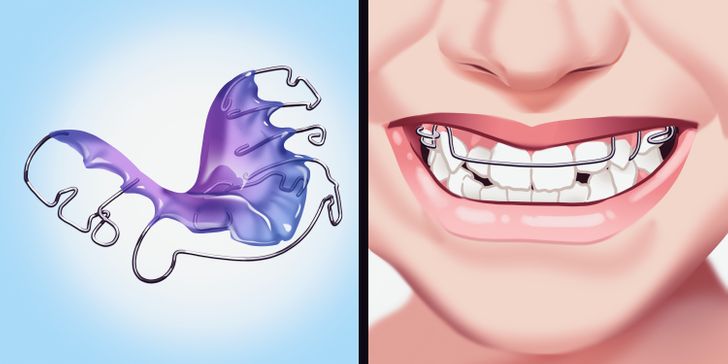
The plate is a plastic device that can be put on the upper or lower jaw (or on both jaws in some cases). It uses wires to secure it on the teeth. They move the growing permanent teeth into the right position and hold them there.
Unlike braces, a plate is a removable device. You can take it out of your mouth yourself while eating or brushing your teeth, and then you can put it back in again.
There are simple variations of plates and more complicated ones. They can be installed to correct the direction of teeth growth and to align protruding upper teeth, in particular.
When you might need it:
Plates are normally recommended for primary school children (8-10 years old) to correct minor problems with a bite or the crowding of teeth. Braces cope with complex tasks more efficiently.
Braces
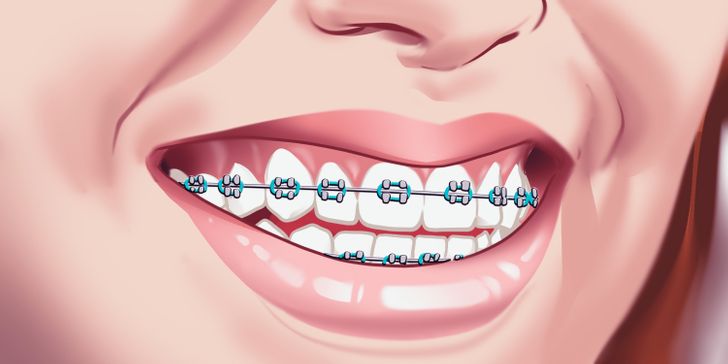
Braces are an orthodontic construction that consists of “brackets” and a metal wire that help to correct the position of teeth. The orthodontist attaches brackets to the teeth and passes metal wire through them. During the correction, the wire is pulled in certain places, gradually moving the teeth into the desired position.
When you might need it:
Braces help to solve problems connected with crowded teeth, malocclusion, and jaw misalignment. With their help, you can correct crooked teeth and make your smile more even.
Braces can be installed at any age, however, it is considered optimal to correct the position of the teeth in childhood. As the child’s bones are still growing, bite problems or crowded teeth can be corrected more quickly.
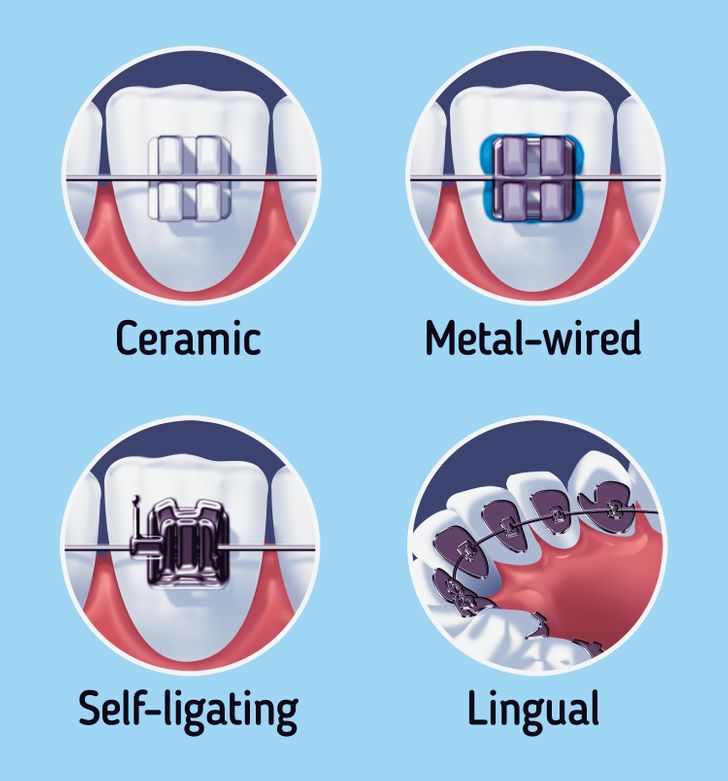
Types of braces
1. Classical metal
They are made of stainless steel and consist of metal brackets, an orthodontic arch, and elastic bands that fix the braces on the structural frame.
Pros:
- They’re durable and not prone to damage.
- They can treat even severe orthodontic problems.
- They’re available in colorful bands to add a bit of individuality.
Cons:
- They’re rather noticeable.
- They are non-removable constructions.
- They require a visit to the dentist regularly to tighten the wires.
- They can cause irritation in the mouth.
2. Ceramic
This is a more unnoticeable alternative to metal braces. Brackets made of ceramic imitate the natural color of teeth and make the construction less visible. Transparent elastic ties are used to fixate the braces.
Pros:
- They can treat even severe orthodontic problems.
- They’re more comfortable than metal braces.
- They are a less noticeable construction.
- They’re more affordable.
Cons:
- They’re non-removable.
- They require a visit to the dentist regularly to tighten the wires.
- They’re more brittle than metal braces.
3. Lingual
Lingual braces are installed on the backside of the teeth, which makes them less noticeable but increases the time of wearing them.
Pros:
- They’re almost unnoticeable.
- They aren’t prone to calcification, like traditionally placed braces.
Cons:
- They take more time to treat defects.
- They have a more complicated process of wire tightening.
- They’re more expensive.
- They require regular trips to the dentist to tighten the wires.
- They can cause tongue irritation and speech issues.
4. Self-ligating
These braces are a less painful alternative to traditional braces, though they act and look almost the same. Instead of elastic ties for teeth alignment, they use a bracket system with doors or clips that attach to the wire.
Pros:
- They are less painful to wear.
- They have a reduced time of wearing (compared to traditional braces).
- There’s no need to make regular trips to the doctor to tighten the wires.
Cons:
- They’re not suitable for everyone.
- They’re more expensive than classic braces.
- They’re more noticeable than other types of braces.
- They require close attention to mouth cavity hygiene and special equipment for cleaning the teeth.
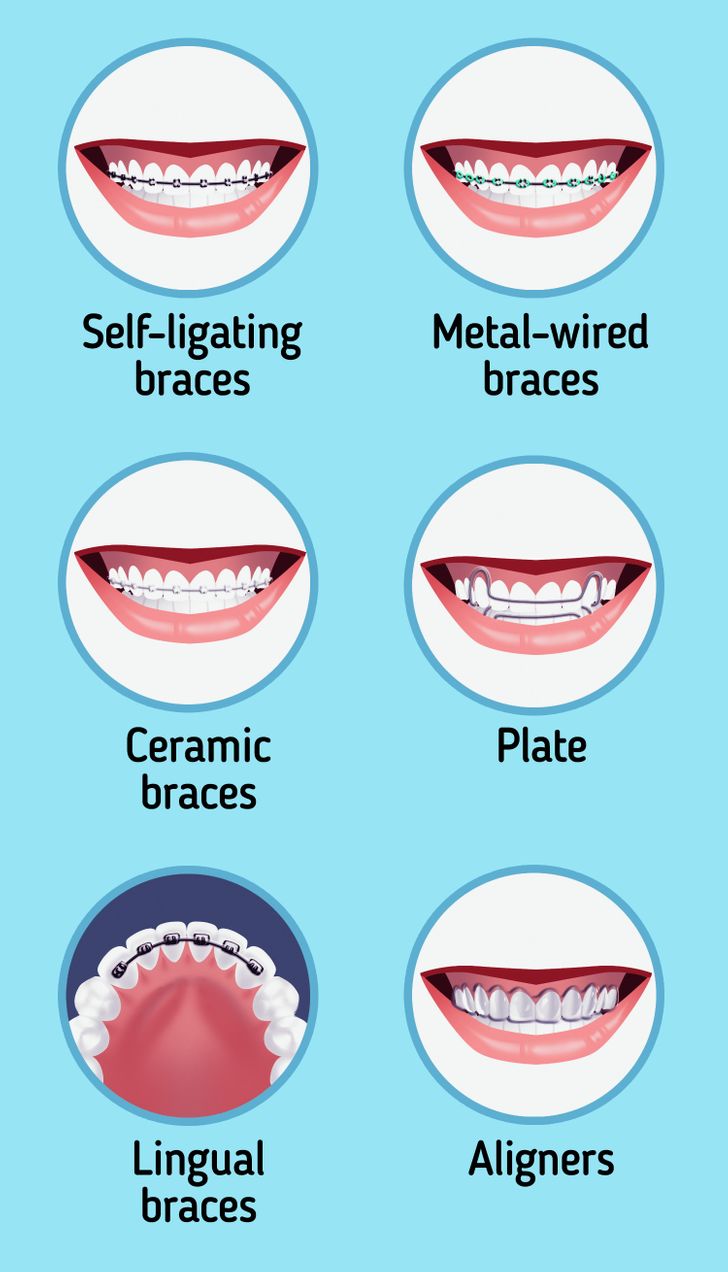
Aligners
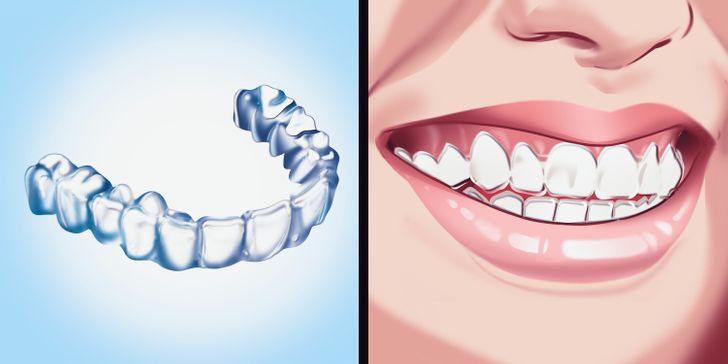
Aligners are transparent plastic trays that are custom made for each patient that fit teeth snugly. The patient should change aligners quite often and switch to a new shape about once every 2 weeks, slowly moving the teeth to the desired position.
When you might need it:
Aligners are prescribed for minor defects that are not connected with major problems. More complex cases usually require braces.
Pros:
- They’re comfortable to wear.
- They’re almost unnoticeable.
- They’re removable.
- They’re easy to take care of.
- They have a faster treatment time compared to classic braces.
Cons:
- They’re not suitable for solving severe dental issues.
- They’re more expensive than braces.
- It’s necessary to remove the aligners when eating, drinking, and brushing your teeth.
Braces vs aligners: what to choose
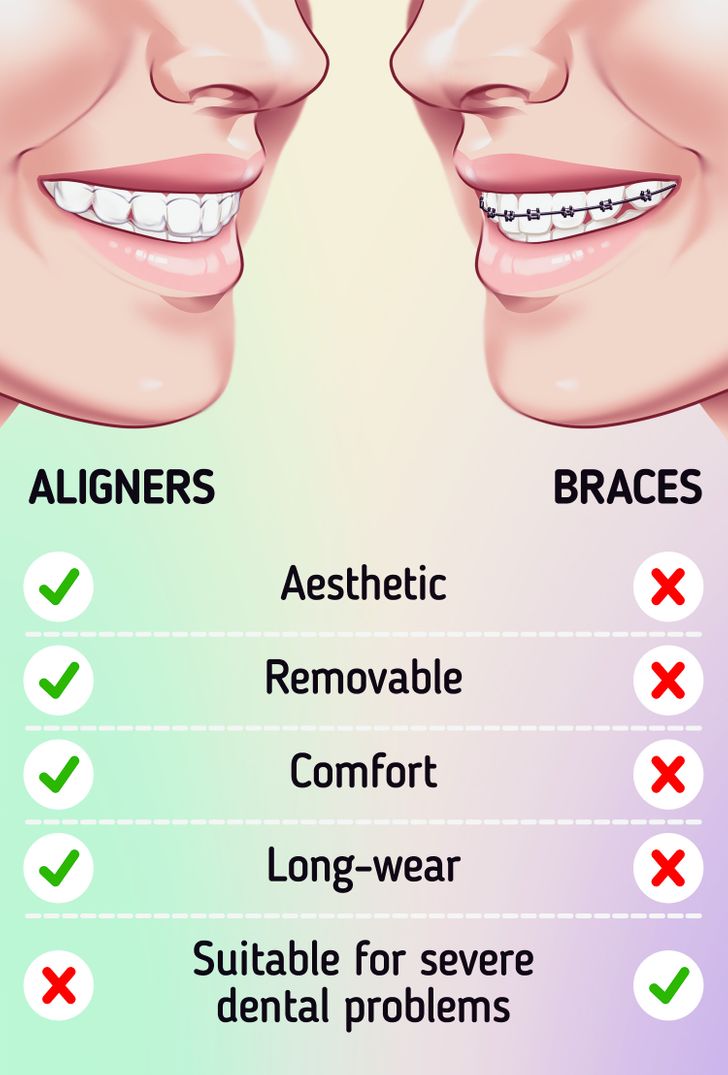
Braces and aligners have similar characteristics but still differ in structure, duration of wear, the way they look, and a number of other features.
In order to choose the best option with your orthodontist, you can read about the pros and cons of both devices in advance.
- Appearance
Braces are quite noticeable, especially due to wire constructions that stretch from tooth to tooth. Some orthodontists may offer rubber bands in different colors to put extra strength on the device.
Aligners are almost invisible on the teeth as they are made of very thin and transparent material. - Comfort
Braces are a non-removable construction that call for intense everyday hygiene of the mouth cavity. Moreover, when wearing braces, dentists recommend that you stop eating hard or sticky foods.
Since aligners are removable, you don’t have to be so careful about what you eat. However, brushing your teeth after any meal is a must for those wearing aligners. - Painful sensations when wearing them
After installing braces, patients may experience slight discomfort for some time. Also, discomfort can occur after tightening the structure, which is done every 3-10 weeks.
When wearing braces, some people may also experience painful sensations caused by rubbing the tongue and cheeks with parts of the brace system.
Patients can experience slight discomfort when installing aligners and every time they replace them (on average, aligners are replaced with new ones every 2 weeks). - Durability of treatment
The average time of treatment with aligners is 9-18 months, and 18-24 months for braces. - What issues they solve
Aligners help to eliminate a mild to moderate crowding of teeth. In more complex cases, dentists usually recommend getting braces that can be used to solve problems of any complexity.